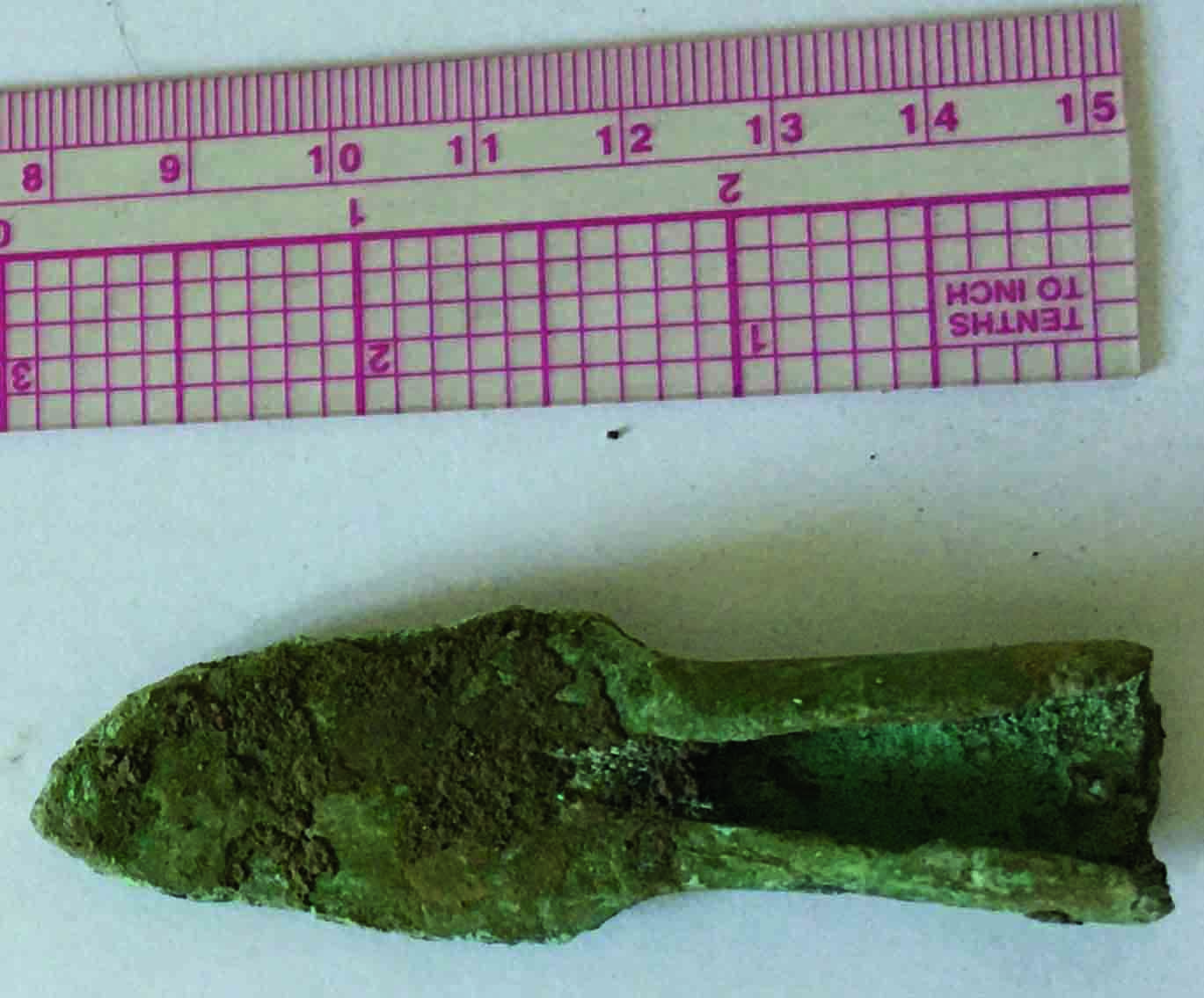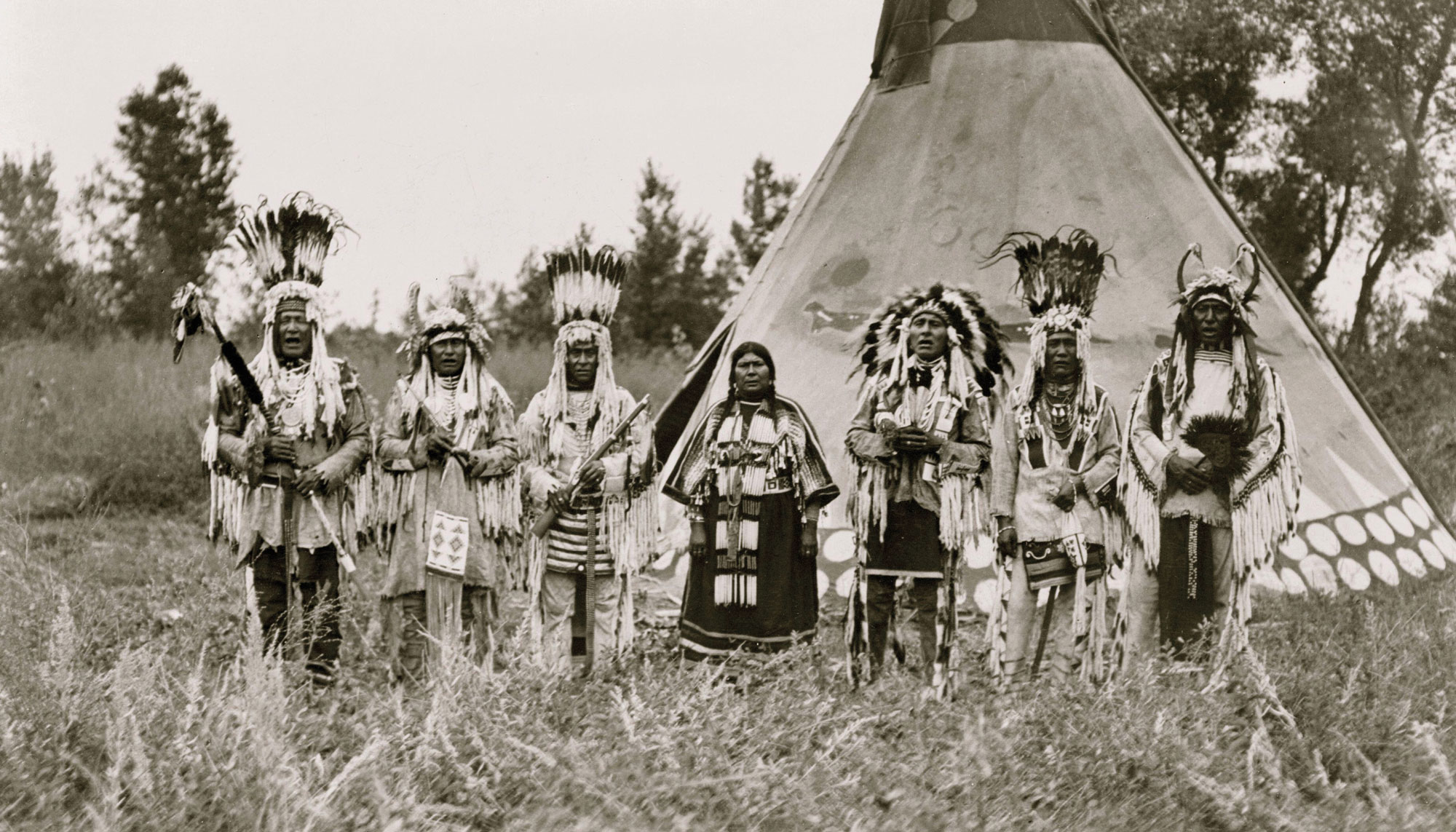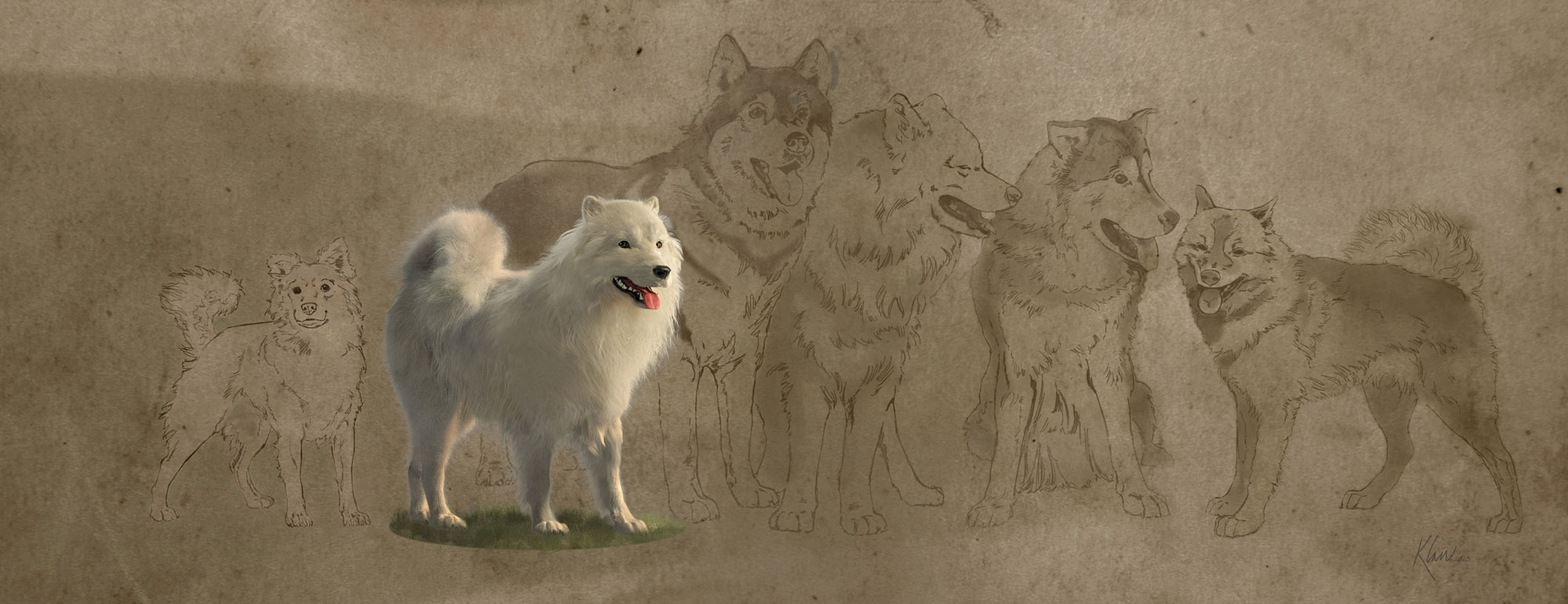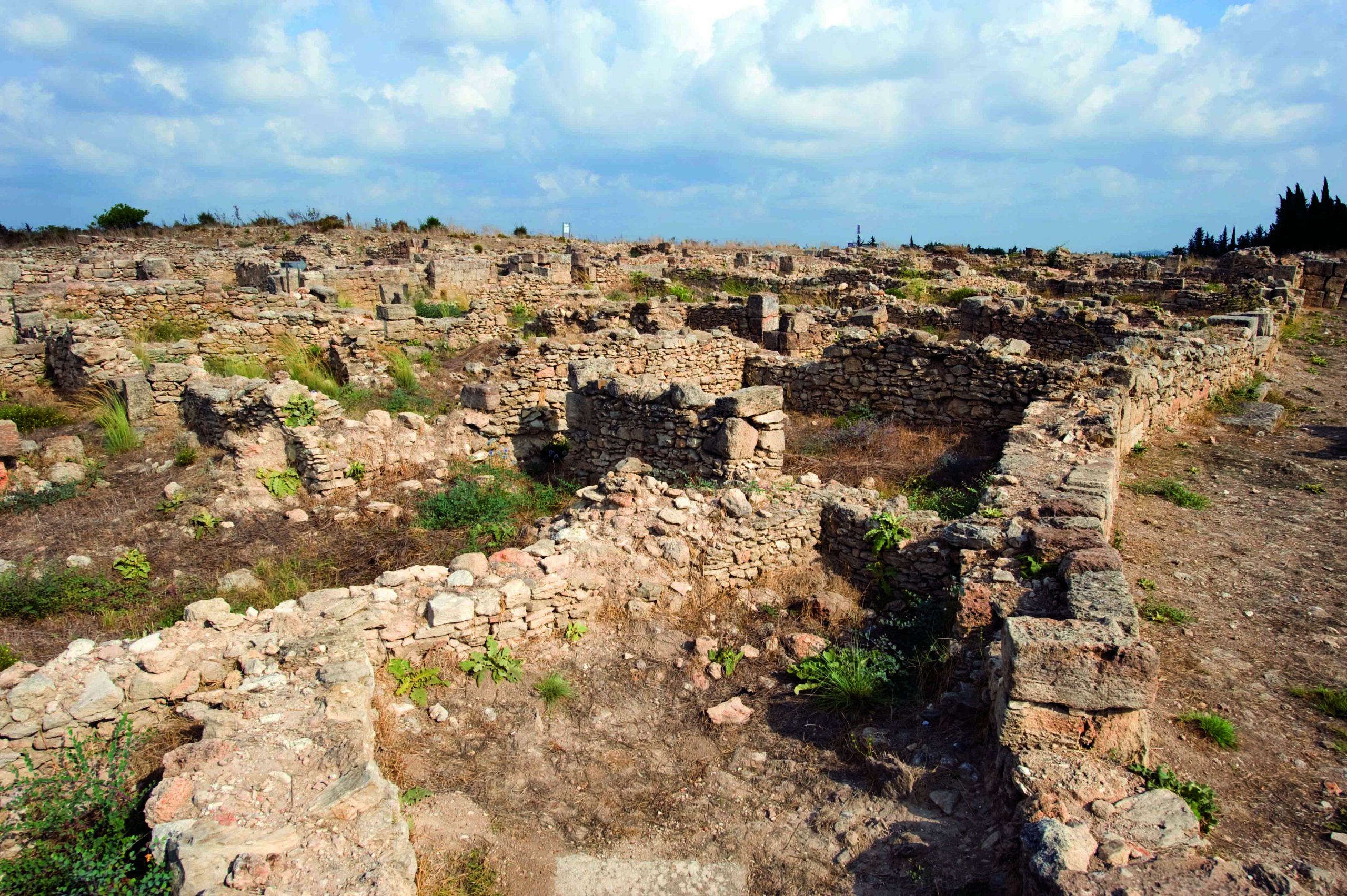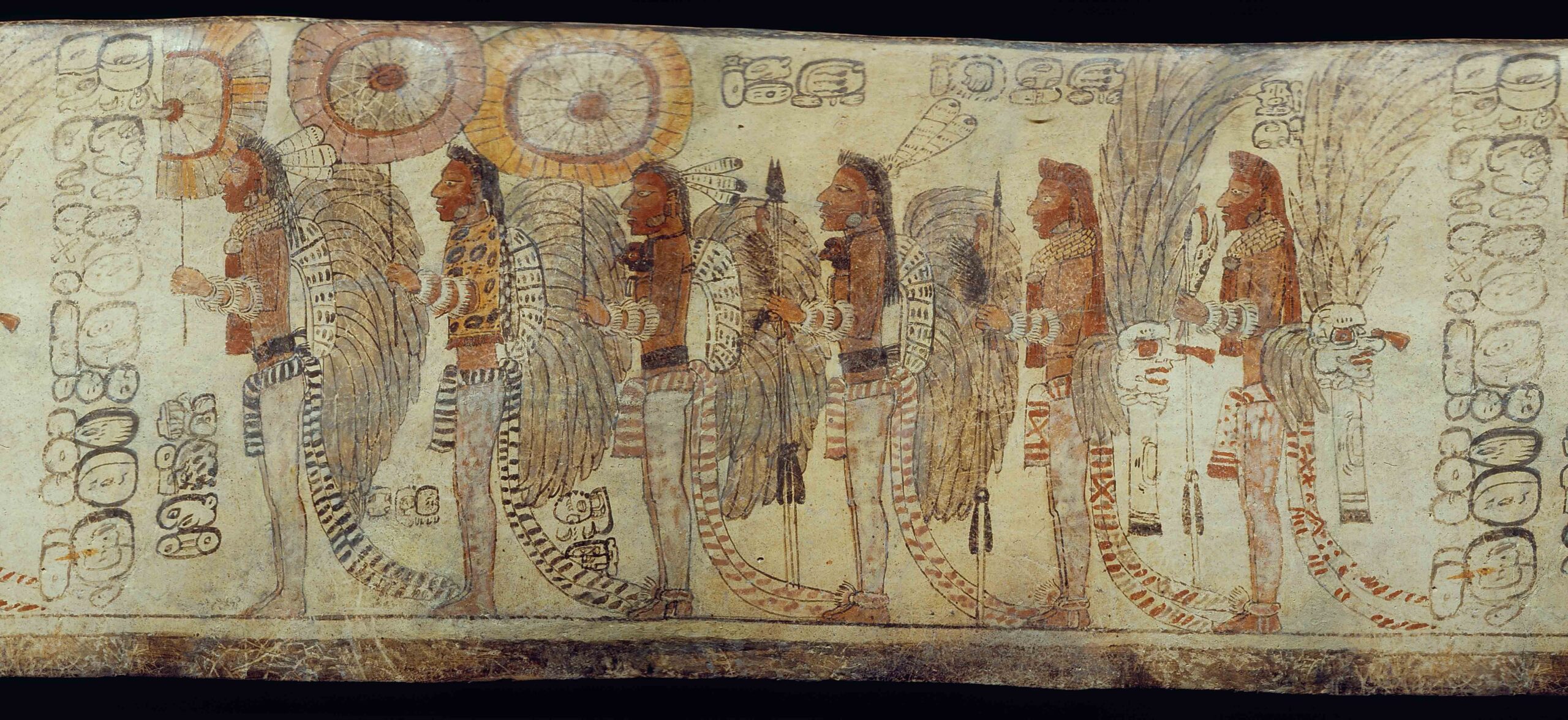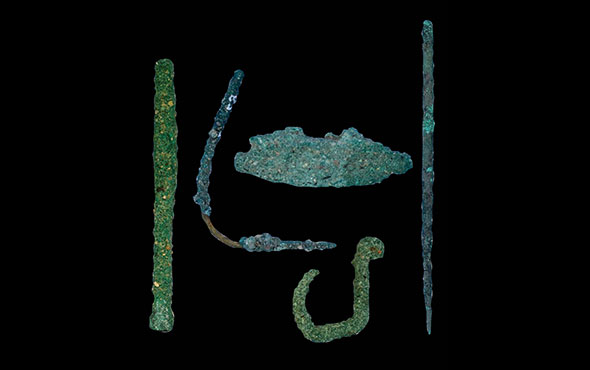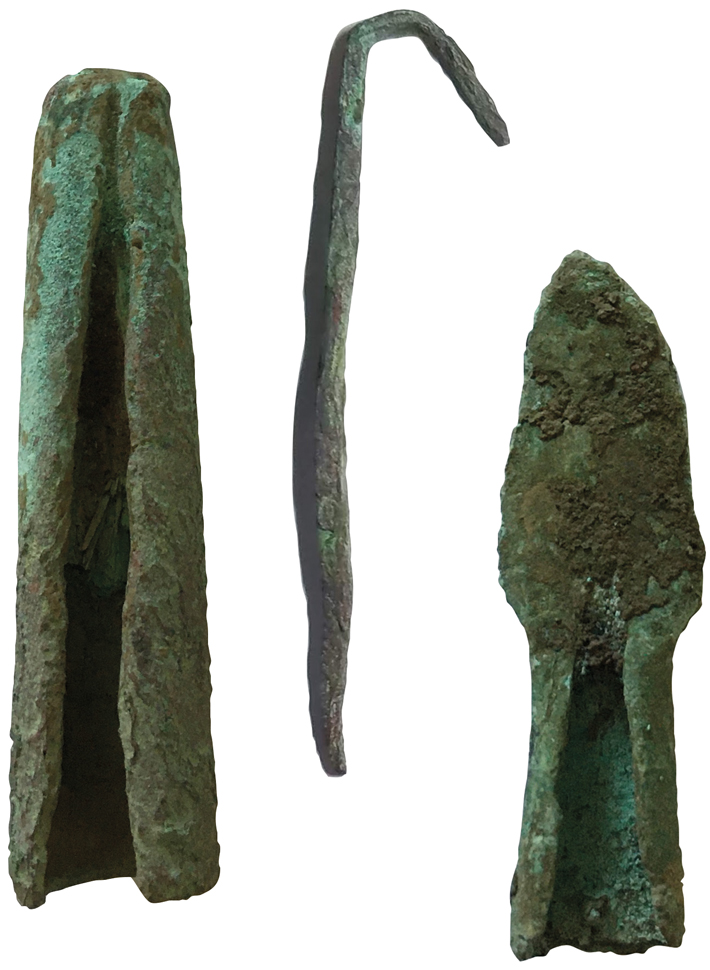
For millennia, hunter-gatherers living around Lake Superior created utilitarian objects such as projectile points, knife blades, and awls out of copper. Today, these Archaic period societies are collectively referred to as the Old Copper Complex (OCC). For reasons not entirely clear, the OCC emerged early in the Archaic period (9000–1000 B.C.) and disappeared sometime between 5,000 and 3,500 years ago. A range of dates has been suggested for when the OCC began. To better pin down when the OCC emerged, a team led by geologist David Pompeani of Kansas State University evaluated 53 radiocarbon dates associated with copper artifacts and ancient copper mines. They found that dates from wood and rope embedded in objects such as projectile points were most likely to reflect the time during which the objects were used, because these materials were preserved in their original context. “The oldest reliable age from embedded material in a copper artifact is about 8,500 years old,” says Pompeani. “Many other samples of embedded material have ages between 8,000 and 5,000 years ago.”
As to why one of the world’s oldest metalworking traditions was abandoned, archaeologist Michelle Bebber of Kent State University believes that copper blades and projectile points did not offer enough of an advantage over stone versions to warrant the greater effort involved in making them, particularly as populations grew and resources diminished. People needed more time to hunt and defend their territory, Bebber suggests, and may have repurposed copper for use in trade or as gifts.


